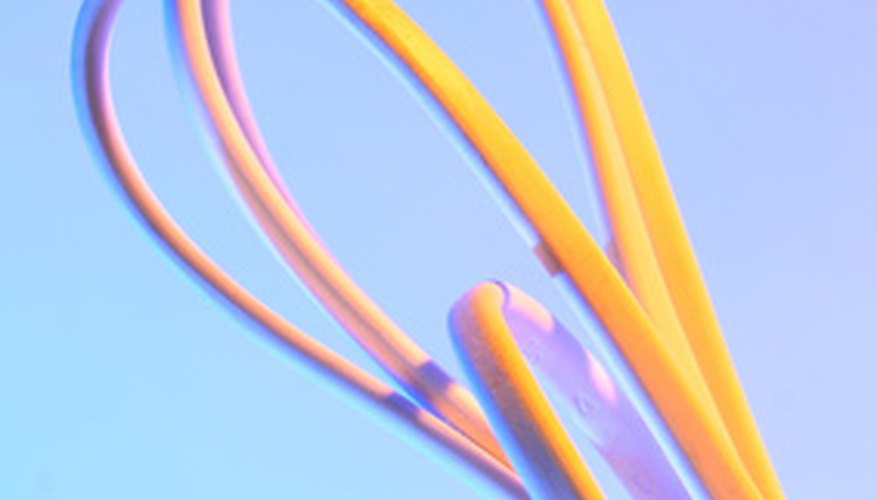An extension lead gets a lot of use in the course of its lifetime. Most types of extension lead are made well and will last for many years if cared for properly. Even the most well-made extension lead, however, will wear out over time. A quality extension lead can sometimes be costly but it is comforting to know that it is possible for you to make your own extension lead.
Lay out the electrical wire. Use the wire cutters to cut the electrical wire to the desired length.
Use wire strippers to remove 2.5 cm (1 inch) of the outer covering of the electrical wire in order to expose the copper wire inside. On heavier gauge wire, the copper wire inside may also have a covering; in this case, use the wire strippers to remove 1.2 cm (1/2 inch) of that covering from each copper wire.
- An extension lead gets a lot of use in the course of its lifetime.
- Use wire strippers to remove 2.5 cm (1 inch) of the outer covering of the electrical wire in order to expose the copper wire inside.
Remove any other insulating material surrounding the inner wire leads. After stripping the covering from the leads to 1.2 cm (1/2 inch), twist each lead end separately to form a solid wire.
Remove the casing from either the male or female plug end and slide it over the stripped leads. Slide the casing up the wire and out of the way.
- Remove any other insulating material surrounding the inner wire leads.
- Remove the casing from either the male or female plug end and slide it over the stripped leads.
Attach each stripped lead end to the appropriate connector on the plug end by wrapping the lead around the screw post. Use the screwdriver to tighten down the screw onto the lead ends.
Slide the plug casing back over the connected lead ends and reattach the casing to the plug. Repeat the process for the other plug end. You now have built your own extension lead.
TIP
There are many types of electrical wire and plug ends to use to build your own extension lead. The type to use will depend on the intended use. Be sure to select the proper gauge wire and matched plug end (in amperage load) for the desired use. It is recommended that you use only grounded electrical wire to build your own extension lead. Some plug ends and electrical wire consist of a two-lead connecting system. Others may be a three-lead system. It is important to connect the right leads when attaching them to the plug end, such as connecting the ground lead to the ground post, etc. Larger gauge wire will be better connected using a clampdown type of plug end. This type of plug end connection will hold the leads tighter and longer than a screw-type connection.
